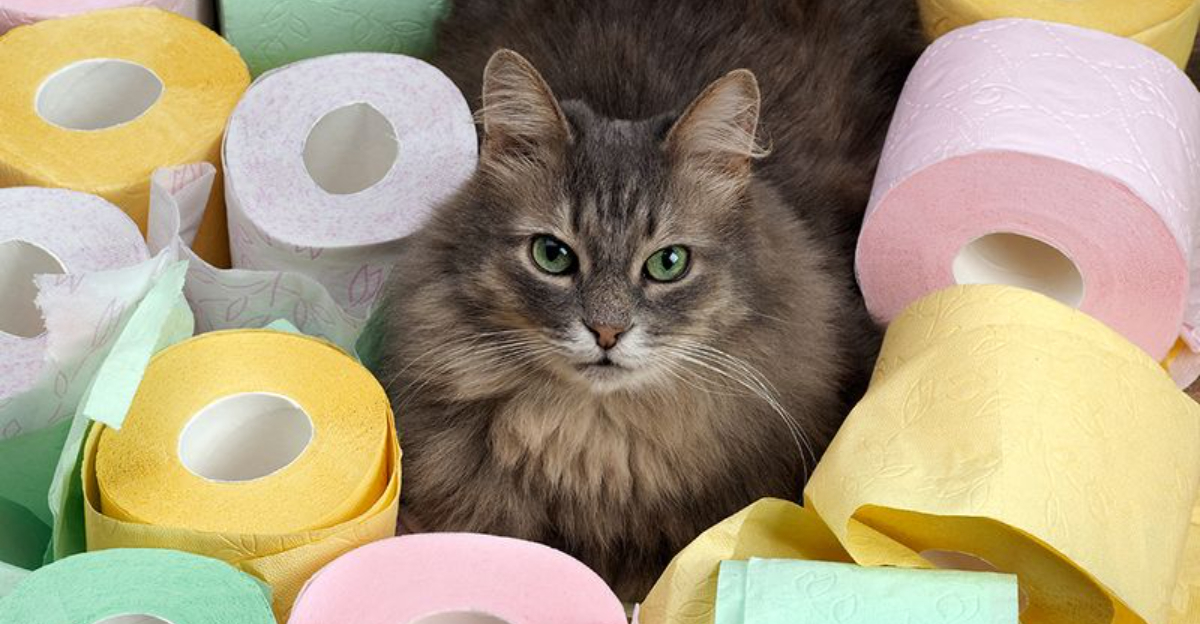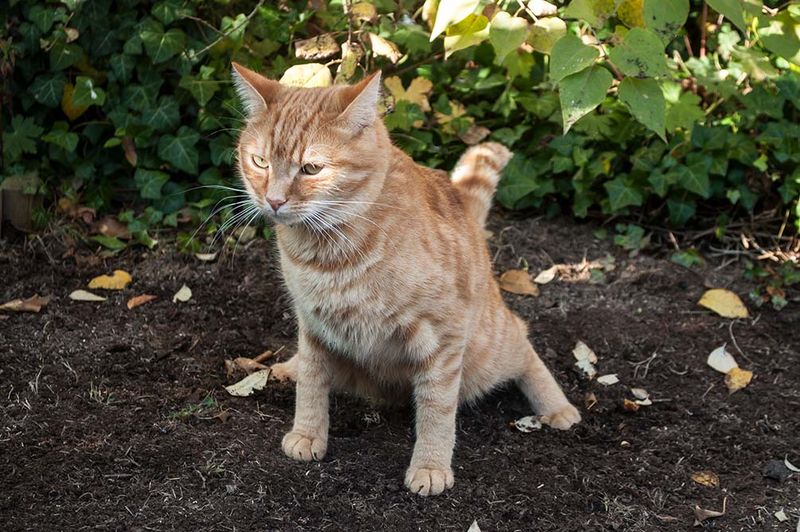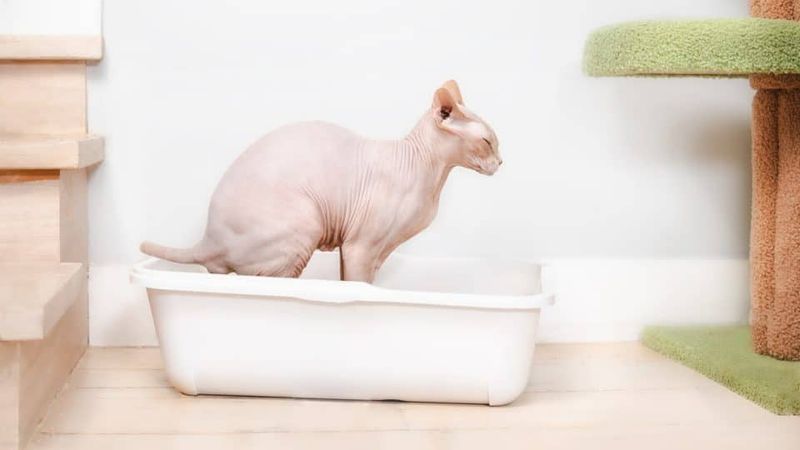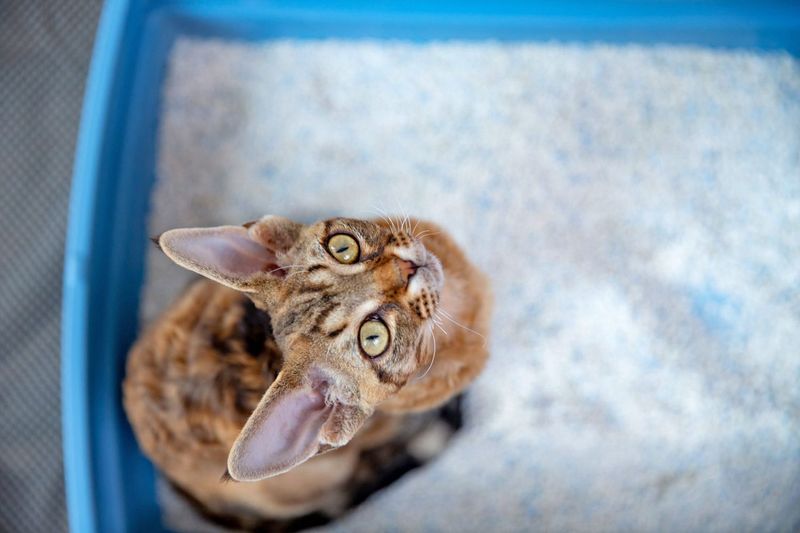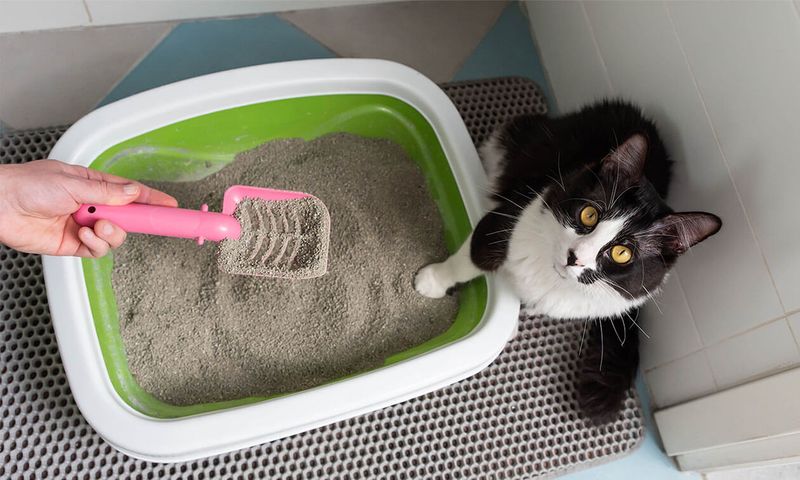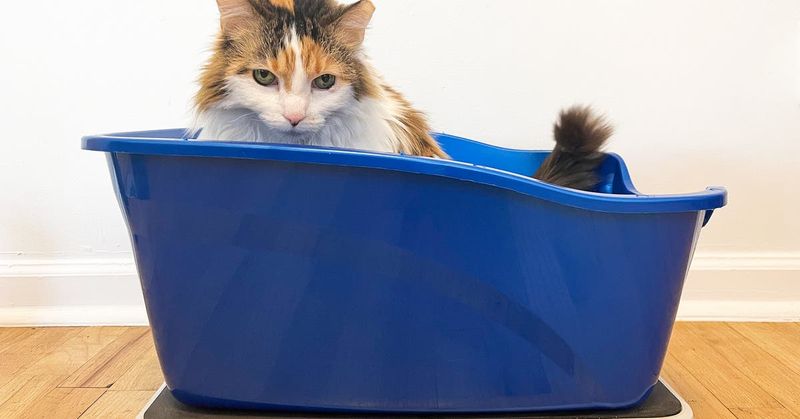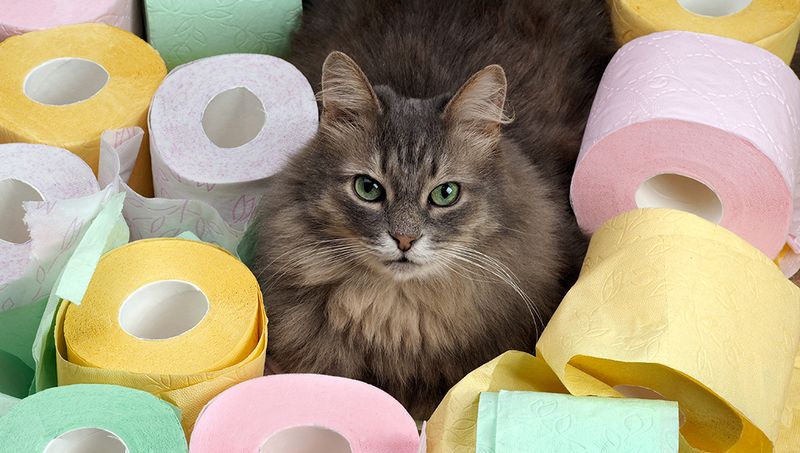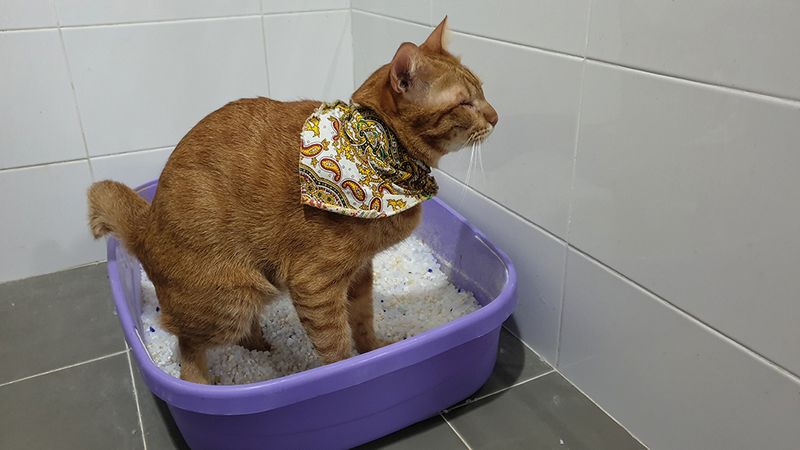📖 Table of Content:
- 1. Perfectly Formed Log-Shaped Stool
- 2. Rich Chocolate Brown Color
- 3. Daily Bathroom Routine
- 4. No Slimy Coating or Mucus
- 5. Fully Digested Content
- 6. Mild, Not Overwhelming Odor
- 7. Stress-Free Litter Box Visits
- 8. Blood Streaks: A Serious Warning
- 9. Diarrhea or Constipation That Won’t Quit
- 10. Unwelcome Hitchhikers: Worms and Foreign Objects
Cat owners often pay close attention to their pets’ eating habits, playfulness, and grooming—but one of the most revealing windows into your cat’s well-being is hidden in their litter box. While it may not be the most glamorous part of pet care, regularly checking your cat’s stool can give you early insight into a range of health conditions. Subtle changes in texture, color, or frequency might be the first signs that something in your cat’s system needs attention.
Unlike dogs, cats are famously good at masking discomfort and illness. This means they might not display obvious signs of distress until a problem has progressed. That’s why monitoring their waste habits can be such a valuable health tool—one that helps you catch imbalances early and respond before they develop into serious issues. Whether you’re dealing with a kitten or a senior cat, understanding what’s normal for their stool is key to being a proactive pet parent.
In this article, you’ll learn about seven positive indicators that your cat’s digestive health is on track, along with three warning signs that should prompt a visit to the vet. The goal isn’t to cause unnecessary worry, but to empower you with knowledge that makes caring for your feline companion more effective. Armed with this information, you’ll be better prepared to detect changes, support your cat’s health, and strengthen the trust between you and your pet.
1. Perfectly Formed Log-Shaped Stool
The ideal cat poop resembles a small, firm log that holds its shape but isn’t too hard. When you scoop the litter box, these perfect little logs should come up easily without leaving residue behind. Think of it like Play-Doh that’s been left out for a short while – firm enough to maintain its shape, but not rock-hard. If your cat consistently produces these well-formed deposits, their digestive system is likely working properly. Too-hard stools might signal dehydration, while overly soft ones could indicate dietary issues or mild digestive upset.
2. Rich Chocolate Brown Color
Color speaks volumes about your cat’s internal health! A medium to dark chocolate brown shade indicates proper bile processing and healthy digestion. This appetizing description might seem odd, but this coloration is exactly what you want to see. Bile pigments from your cat’s liver give stool its characteristic brown color. When everything’s functioning normally, these pigments break down at just the right rate. Consistently seeing this chocolate hue means your cat’s liver and gallbladder are likely doing their jobs perfectly, properly processing nutrients and waste.
3. Daily Bathroom Routine
Cats are creatures of habit, and their bathroom schedule is no exception! Most healthy adult cats will visit their litter box to defecate once daily, though some may go a bit more or less frequently. What matters most is consistency. A cat that suddenly changes their routine – going multiple times when they usually go once, or skipping days entirely – might be experiencing health changes. Regular timing matters too. Many cats prefer to do their business after meals or at specific times of day. This clockwork precision reflects a well-functioning digestive tract.
4. No Slimy Coating or Mucus
Mucus-free stool indicates a happy colon! Healthy cat droppings shouldn’t have any visible slime, gel-like coating, or mucus on the surface. Clean, mucus-free poop suggests your cat’s intestinal lining is in good shape. Your cat’s intestines naturally produce small amounts of mucus to help waste move smoothly through the digestive tract. When inflammation occurs, excess mucus production can result in visible slime on stool. Occasionally seeing a tiny bit might not be cause for alarm, but regular appearances of mucus could signal inflammation, irritation, or early colitis requiring veterinary attention.
5. Fully Digested Content
Spotting undigested food in your cat’s litter box? That’s not ideal! Healthy cat waste should show no visible food particles or undigested elements (except perhaps small amounts of fur from grooming). When your kitty’s digestive system works efficiently, food gets broken down completely before elimination. The absence of recognizable food bits indicates proper enzymatic action, stomach acid production, and intestinal function. Consistently seeing kibble, meat chunks, or other food fragments might signal your cat is eating too quickly or experiencing digestive enzyme insufficiency, malabsorption issues, or food sensitivities.
6. Mild, Not Overwhelming Odor
Nobody expects roses from the litter box, but catastrophically smelly poop isn’t normal either! Healthy cat waste should have a mild, not overpowering odor that’s easily managed with regular scooping and litter changes. Severely stinky stool often indicates something’s amiss. Diet plays a huge role here – low-quality foods with fillers typically produce more pungent waste than high-protein, species-appropriate diets. Sudden increases in stink factor might signal parasites, bacterial overgrowth, or digestive inflammation. Your nose knows – if you’re suddenly holding your breath during litter duty, a vet visit might be warranted.
7. Stress-Free Litter Box Visits
Watch your cat’s litter box behavior for health clues! A cat with healthy digestion should enter the box, do their business without drama, cover it up, and walk away without signs of pain or distress. Red flags include excessive straining, crying, multiple unsuccessful attempts, or rushing from the box. Some cats might even associate pain with the litter box and begin avoiding it entirely. Happy bathroom behavior indicates comfortable, pain-free elimination – a sign that your cat’s digestive tract, from mouth to tail-end, is working harmoniously. Consistent ease during potty time suggests all systems are operating smoothly.
8. Blood Streaks: A Serious Warning
Seeing red? Never ignore blood in your cat’s stool! Bright red streaks typically indicate bleeding in the lower digestive tract – possibly from inflammation, infection, or anal gland issues. Dark, tarry, blackish stool (called melena) suggests bleeding higher up in the digestive system, which can be even more concerning. This digested blood often indicates ulcers, tumors, or other serious internal problems. Any blood presence warrants immediate veterinary attention, as it’s never normal. Even small amounts could signal conditions ranging from simple constipation to parasites, polyps, or more serious diseases requiring prompt treatment.
9. Diarrhea or Constipation That Won’t Quit
Occasional mild digestive upsets happen, but persistent poop problems need attention! Healthy cats should maintain relatively consistent stool quality without ongoing diarrhea or constipation. Diarrhea lasting more than 24-48 hours can quickly lead to dangerous dehydration, especially in kittens or senior cats. Meanwhile, straining to produce small, hard pellets signals constipation that can become painful and potentially lead to megacolon if chronic. Both conditions can stem from various causes – from dietary indiscretions and stress to parasites, infections, inflammatory bowel disease, or even cancer. When bathroom troubles become the norm rather than exception, veterinary investigation becomes essential.
10. Unwelcome Hitchhikers: Worms and Foreign Objects
Found something extra in the litter box? Certain unwanted additions should send you straight to the vet! White segments resembling rice grains could be tapeworm segments, while spaghetti-like strands might be roundworms – both common parasites requiring treatment. Equally alarming are foreign materials like string, plastic, or fabric bits. These suggest your curious kitty has ingested something they shouldn’t have, which could cause dangerous intestinal blockages. Regular deworming helps prevent parasite problems, while keeping tempting non-food items out of reach protects against foreign body ingestion. Both scenarios require veterinary care to resolve safely.
